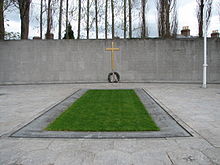1916
Arts & Culture

Cover of Anna Blume
During an era when every worldwide event made sense to one group of people or another, the arts were moving in a direction that did not. Dadaism, a European art movement-taking place during the early twentieth century, favored the dismantlement of reason and logic. Upholding nonsense, irrationality, and intuition were negative responses to the horror created from World War I. Dadaism primarily involved the literary, performance, and visual arts concentrating its anti-war politics through its rejection of the norms in culture and the arts. Broad and unstable, Dada began blended into movements such as surrealism and some argue it was the beginning of postmodern art.
Science, Technology & Ideas

BMW, M6 coupe
Although, most of technological innovation was concentrated on military weaponry due to World War I, 1916 saw great changes that would carry us into the modern world. In April of 1916, William Newton and Morris Goldberg, increasing the ease of use for technology in the home, created the light switch. A little more than a month later, Britain initiates the use of daylight saving time and Germany founds BMW in Munich.

Margaret Sanger (1922), first president and founder of Planned Parenthood
Social Change
Before 1916, women in the United States did not receive any support in terms of reproductive rights. Because women were viewed as the property of a man, women did not have choices concerning whether they could or desired to conceive and carry children. However, women like Emma Goldman began paving the way when, on February 11, she was arrested for lecturing about birth control. Later that year, Margaret Sanger made history as she opened the first birth control clinic in America, which became the forerunner to Planned Parenthood.
War, Politics & Nature

The burial spot of the Leaders of the Rising, in the old prison yard of Arbour Hill prison. The Proclamation of 1916 is inscribed on the wall in both Irish and English
On April 27, an Irish division was obliterated in one of the most heavily concentrated German gas attacks of the war in Hulluch, France. In the Battle of the Somme, the British Empire experienced its bloodiest day in the war after losing almost 60,000 troops on July 1, 1916, causing the death of more than one million soldiers. The Somme Offensive is still considered one of humanity’s bloodiest battles. While the British were busy offensively in the World War, the Irish declared an Irish Republic and seceded from the United Kingdom during the Easter Rising. Due to immense numbers and advanced artillery, the uprising was quickly quashed. W. B. Yeats’ “Easter, 1916” memorializes this most significant Irish rebellion since 1798.

Excellent overview, excellent use of links, and very relevant selections here–particularly those deadline with women’s rights and various national struggles of 1916. And Dada, of course…
Well done!